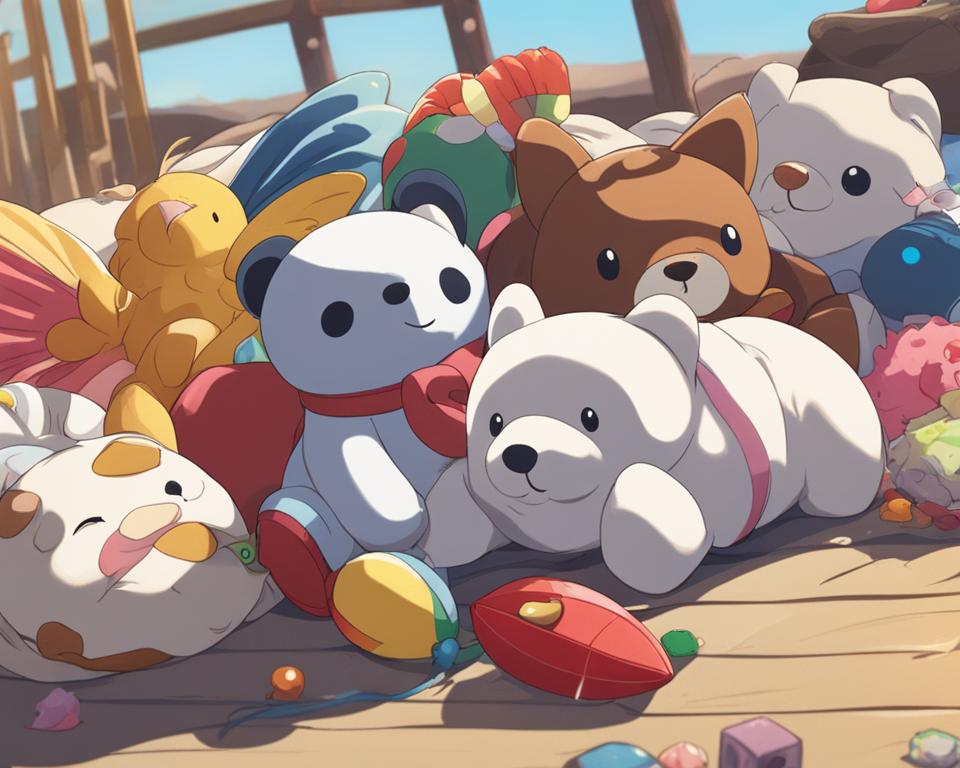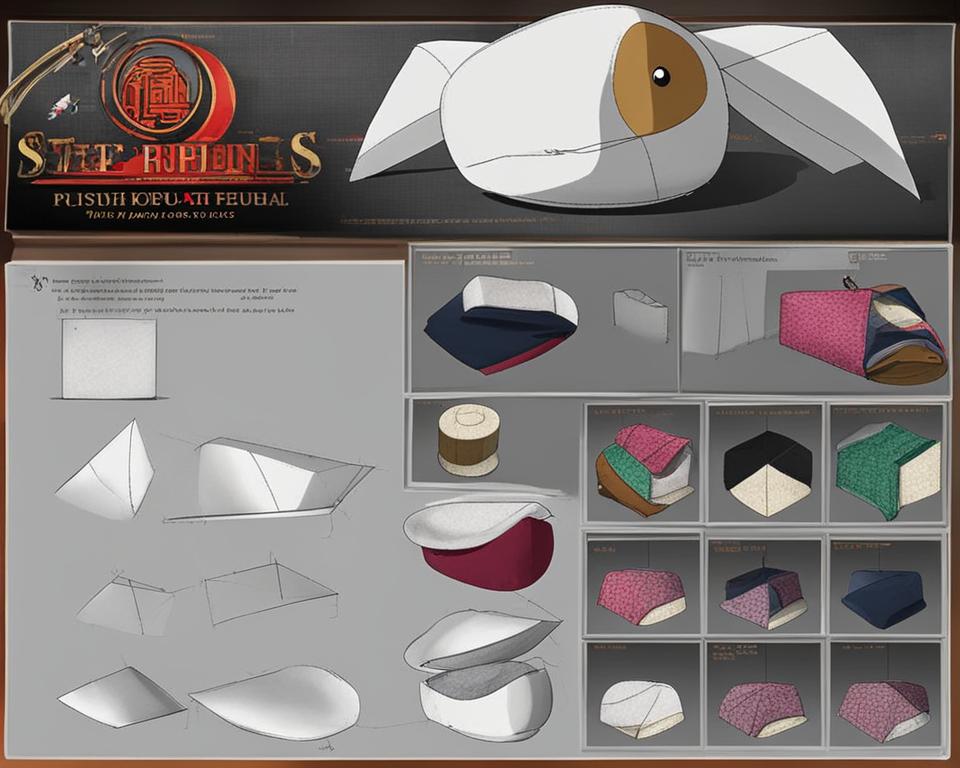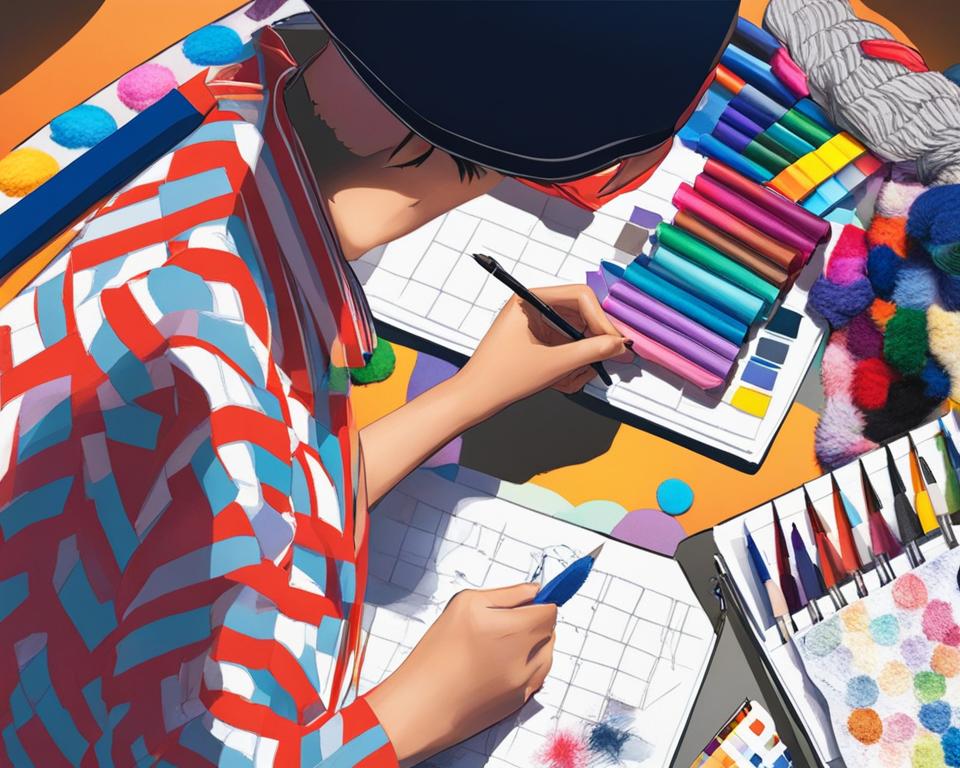Plush toys hold a special place in the hearts of children, providing comfort, companionship, and endless hours of imaginative play. However, when these cherished companions get wet, it’s important to know the best methods for drying them to ensure their longevity. Whether your child’s favorite stuffed animal took an unexpected dive in the bathtub or encountered a surprise rain shower, I’m here to guide you through effective and safe ways to dry plush toys, so they can be back in your little one’s arms in no time.
Drying plush toys may seem like a simple task, but it requires specific techniques to prevent damage to their delicate materials. By following the tips and recommendations I’m about to share, you can ensure that your child’s plush toys are dried effectively without compromising their quality.
Key Takeaways:
- Properly drying plush toys is crucial to maintain their cleanliness and longevity.
- Accidental wetness can be remedied with quick and effective drying methods.
- Following expert recommendations can help prevent damage to plush toys during the drying process.
- Prioritizing hygiene practices ensures the safety of your child when playing with plush toys.
- Choosing the right plush toys for your child’s needs can enhance their sensory and emotional development.
Tips for Drying Plush Toys
Drying plush toys requires specific techniques to prevent damage to their materials and keep them in good condition. Here are some tips to help you effectively dry your plush toys:
Air Drying
Air drying is one of the best methods to dry plush toys, as it is gentle and minimizes the risk of damage. Start by gently squeezing out any excess water from the toy. Then, find a well-ventilated area, preferably outdoors or near an open window. Place the toy on a clean towel or a drying rack, making sure it’s not exposed to direct sunlight, which can cause fading or discoloration. Rotate the toy every few hours to ensure even drying.
Using a Hairdryer
If you need to dry a plush toy quickly, you can use a hairdryer on a low heat setting. Keep the hairdryer at least 6 inches away from the toy to avoid overheating and damaging the fabric. Move the hairdryer in a sweeping motion, ensuring that all areas of the toy receive equal heat. Pay special attention to the seams and any areas where moisture may be trapped. Keep in mind that this method should only be used for toys that are made of synthetic materials and do not have any delicate embellishments.
Spot Cleaning and Spot Drying
If a small area of the plush toy is wet or dirty, spot cleaning and spot drying can be effective. Use a clean cloth or sponge dampened with mild soap and water to gently clean the affected area. Blot the area with a dry cloth to remove excess moisture. Then, use a hairdryer on a low heat setting to carefully dry the spot. Make sure not to wet the rest of the toy or apply excessive heat, as this can cause damage.
By following these tips, you can ensure that your plush toys are dried effectively and ready for playtime. Remember to always check the manufacturer’s instructions for specific care guidelines, as some toys may require different drying methods. With proper care, your plush toys will continue to bring joy to your child for years to come.
Safe Hygiene Practices for Plush Toys
When it comes to plush toys, ensuring safe hygiene practices is essential, especially considering their frequent contact with children’s mouths and various surfaces. Follow these guidelines to maintain the cleanliness and safety of your child’s plush toys:
- Regularly wash plush toys: Plush toys can accumulate dirt and germs over time, so it’s important to establish a regular cleaning routine. Check the manufacturer’s instructions for cleaning guidelines, and if the toy is machine washable, place it in a pillowcase or laundry bag to protect it during the wash.
- Spot cleaning: For small stains or spills, spot cleaning is a convenient solution. Dampen a clean cloth with mild soap and water, then gently blot the affected area. Avoid rubbing vigorously to prevent damage to the toy’s fabric or stuffing.
- Avoid using harsh chemicals: Harsh chemicals, such as bleach or strong detergents, can damage the materials of plush toys and pose a risk to children’s health. Stick to mild soap or baby-friendly detergents when washing plush toys.
- Air drying: After washing or spot cleaning, ensure that plush toys are thoroughly dried before returning them to your child’s play area. Air drying is the safest method to prevent any potential damage that could occur in a dryer. Hang the toy in a well-ventilated area, away from direct sunlight, to allow for complete drying.
- Regular inspections: Periodically inspect plush toys for signs of wear, loose seams, or damaged parts. If you notice any damage, promptly repair or consider replacing the toy to prevent potential hazards.
By incorporating these safe hygiene practices into your plush toy care routine, you can ensure that your child’s beloved companions are clean, germ-free, and safe for playtime.
Choosing the Right Plush Toys for Children
When it comes to selecting plush toys for your child, it’s important to consider various factors to ensure you make the best choice. Not all plush toys are created equal, and finding the right one can contribute to your child’s overall development and enjoyment. Here are some key aspects to keep in mind:
1. Age Appropriateness
Consider your child’s age when choosing a plush toy. Some toys may have small parts that can pose a choking hazard for younger children. Look for age recommendations on the toy’s packaging and choose accordingly to ensure a safe play experience.
2. Materials and Safety Standards
Check the materials used in the plush toy and make sure they are safe and non-toxic. Look for toys that meet safety standards and have undergone rigorous testing to ensure their quality. Soft, hypoallergenic materials are ideal, especially for children with sensitive skin.
3. Purpose and Design
Consider the purpose and design of the plush toy. Is it designed for cuddling, imaginative play, or sensory stimulation? Think about what your child enjoys and what aspects of play are important for their development. Whether it’s a plush animal, character, or interactive toy, choose one that aligns with your child’s interests and needs.
4. Durability and Washability
Plush toys can go through a lot of playtime adventures and may need regular cleaning. Look for toys that are well-constructed and can withstand rough play. Additionally, opt for toys that are machine washable or easy to spot clean to maintain their hygiene over time.
| Feature | Importance |
|---|---|
| Age Appropriateness | Ensures safety and age-appropriate play |
| Materials and Safety Standards | Promotes a healthy and non-toxic play environment |
| Purpose and Design | Encourages engagement and supports development |
| Durability and Washability | Maintains longevity and hygiene of the toy |
By considering these factors, you can choose plush toys that not only bring joy to your child but also contribute to their overall well-being and development.

Expert Recommendations for Drying Plush Toys
When it comes to drying plush toys, experts recommend employing gentle methods that prioritize the preservation of the toy’s materials and structure. Here are some expert recommendations for effectively drying your beloved plush toys:
1. Air Drying
One of the safest and most widely recommended methods for drying plush toys is air drying. Simply place the toy in a well-ventilated area, away from direct sunlight, and allow it to air dry naturally. This method helps prevent damage to the toy’s fabric and stuffing, ensuring it retains its shape and softness.
2. Use a Fan or Hairdryer on Low Heat
If you need to speed up the drying process, you can use a fan or hairdryer on the lowest heat setting. Keep the toy a safe distance away from the fan or hairdryer to avoid overheating or melting any plastic components. Move the device back and forth to ensure even drying and prevent any localized heat damage.
3. Spot Cleaning and Blotting
If the plush toy only has a small area that needs drying, such as a spill or localized wetness, experts recommend using a clean cloth to blot the moisture. Gently press the cloth onto the wet area to absorb the liquid without rubbing or scrubbing, which can damage the toy’s fabric or stuffing.
Remember to always check the manufacturer’s care instructions for any specific guidelines on drying plush toys. If in doubt, consulting with a professional toy cleaner can provide further guidance and ensure the optimal care for your plush toys.
| Expert Recommendations for Drying Plush Toys | Benefits |
|---|---|
| Air Drying | – Preserves the toy’s materials – Retains its shape and softness |
| Use a Fan or Hairdryer on Low Heat | – Speeds up drying process – Ensures even drying |
| Spot Cleaning and Blotting | – Suitable for localized wetness – Prevents fabric damage |
Conclusion
Properly drying plush toys is essential to keep them clean, safe, and in good condition. By following the tips and techniques outlined in this guide, you can effectively dry plush toys and ensure they are ready for playtime.
When drying plush toys, remember to consider the specific instructions provided by the manufacturer. Different toys may require different methods, such as air drying or gentle heat drying. Always prioritize the safety and longevity of your child’s favorite companions.
Additionally, maintaining hygienic practices is crucial when it comes to plush toys. Regularly clean and dry them to prevent the growth of bacteria or mold. This is especially important if the toys end up in your child’s mouth or come into contact with various surfaces.
With the quick drying methods for plush toys discussed in this guide, you can easily ensure that your child’s beloved companions are dry and ready for hugs and play in no time!
FAQ
Can I put plush toys in the dryer?
It is not recommended to put plush toys in the dryer, as the heat can damage their materials and cause them to lose their shape. It’s best to use alternative drying methods.
How long does it take for a plush toy to air dry?
The drying time for a plush toy depends on various factors, such as the size of the toy and the humidity in the air. It can take anywhere from a few hours to a day or two for a plush toy to fully air dry.
Can I use a hairdryer to dry a plush toy?
It is generally not recommended to use a hairdryer to dry a plush toy, as the hot air can cause the toy’s fabric to shrink or melt. It’s safer to use gentler drying methods.
Is it safe to wash a battery-operated plush toy?
Battery-operated plush toys should not be submerged in water or washed in a washing machine. Instead, spot clean them using a damp cloth or follow the manufacturer’s instructions for cleaning.
Can I use a fan to dry plush toys?
Yes, using a fan can help speed up the drying process for plush toys. Place the toy near a fan or set up a portable fan to circulate air around it. Make sure not to place the toy too close to the fan to avoid potential damage.
How often should I clean my child’s plush toys?
It is recommended to clean your child’s plush toys regularly, especially if they are played with frequently. Aim to wash them every few weeks or as needed, depending on the level of dirt or stains.





